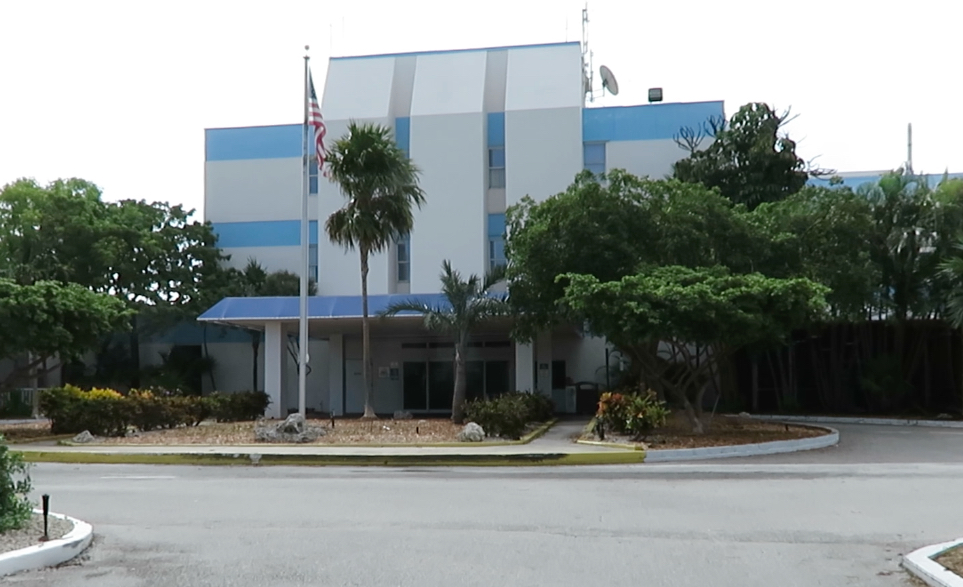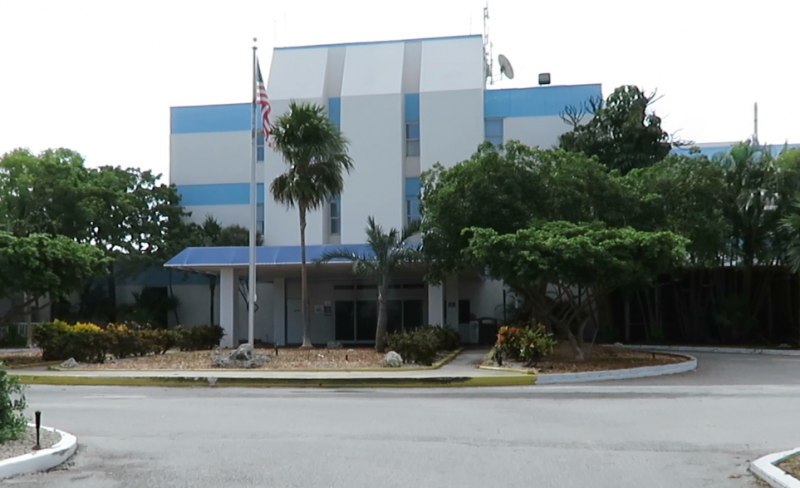Key West’s Hospital Privatization Deal: A Preliminary Autopsy
by Arnaud and Naja Girard…….
Once upon a time Key West had a large piece of land on Stock Island where our Hospital District built a brand new hospital. It was meant to “protect the availability of needed hospital services to residents of the district, including indigent residents.” That was 1972.
By 1999 the Hospital District had signed a deal which, in essence, privatized the entire lower Keys hospital care system. The deal went down in the midst of intense controversy, as a completely opaque and troubling operation. Most of the players and the ultimate price tag had been kept secret from the public until this week.
But under growing public pressure, including threats of a grand jury investigation, the walls are beginning to crack. One of the main players, Roberto Sanchez, authorized his former attorney, Jim Hendrick, to release his elusive “5-inch binder” containing the ins and outs of the 1999 deal.
The idea behind the creation of a special Hospital District was to guaranty the availability of healthcare even to those in the community who were living in poverty. In that sense the 1999 privatization scheme appeared well-thought-out. That was the period when the AIDS epidemic seemed to be swinging out of control with no end in sight, and when legions of homeless people were discovering Key West, just as tourists were, through growing popularity and TDC advertisements.
To meet its new burden, the Hospital District had the power to raise taxes (never very popular) or it could pass it on to a private corporation – buildings, homeless, AIDS patients and all, and let the private sector figure out how to make it work. That was the solution that ultimately prevailed.
But what most members of the public did not know at the time of the negotiations was that some of the players were caught up in an apparent conflict of interest. Only the Stock Island hospital was owned by the District. The other one, Depoo Memorial Hospital, was owned by a private group, the Kennedy Drive Investors (KDI) headed by Mr. Sanchez. According to Hospital District Board Chairman, John Padget, KDI was the driving force behind the private takeover.
But did they have the interests of local residents at heart? Probably. But here’s the thing: While the District received $10 million* in rent for its large hospital on Stock Island it also had to put $15 million in an escrow account to cover the yearly $1.5 million it would have to pay back to HMA [Health Management Associates] under the deal. KDI on the other hand, the architects of the deal, would be paid $46 million in total rent for their much smaller hospital on Kennedy Drive.
At the time, some people in the know tried to rattle the decisionmakers – to force a better deal. Mr. Padget was one of them. But the meetings of the board were closed to the public. It took a court order to force them open. By the time Mr. Padget had enough information and could address the board, he was basically told: You’re a little too late. The train’s already left the station.
Whatever the reasons, the general sentiment today is that the Hospital District did not retain enough control over hospital rates, doctor compensation, or the enforcement of indigent care requirements. Many felt then and now that residents got the wrong end of the stick in the privatization deal.
At first glance there were clearly some positive aspects to the agreement with HMA. Residents would avoid paying taxes while guaranteeing the availability of a full spectrum of healthcare for all residents.
In addition to operating the two hospitals (Depoo on Kennedy Drive and the hospital on College Road on Stock Island) the 30-year lease required HMA (and now CHS) to provide, free of charge, adequate space, administrative and non-physician staffing for a “primary care clinic.” The clinic would offer a broad range of care and would be open to all residents on an expanded operating schedule and would provide free care for the indigent.
In other words, a sliding-scale clinic would be established with all of the overhead paid by HMA, allowing the participating doctor[s] to charge non-indigent patients reasonable fees, which would help absorb the costs of treating the indigent aids patients and others for free. Actually, not totally free: The District was also pledging 1/2 million dollars per year to assist in compensating the doctors for providing indigent care through the clinic.
Finally, HMA/ now CHS [Community Health Systems] was also required to provide free emergency care at the hospital’s ER for indigent patients. To assist with that expense the District was pledging another $1.5 million per year for the first 10 years.
However, when we asked the District where to find this primary care clinic that is open to all residents on an expanded operating schedule, nobody seemed to be able to point us in the right direction. The only thing resembling CHS’s contractual obligation is a clinic at Depoo Hospital. However, that clinic serves only indigents and walk-ins are admitted to see a physician only twice a week. The clinic itself does not seem to be advertised at all and many of the homeless people we’ve interviewed told us they rely mostly on the emergency room on Stock Island – even for non-life-threatening issues. (Which should be the role of a primary care clinic.)
Yet, according to the scant information we could squeeze out of the Hospital District and CHS, the District is paying that 1/2 Million a year in connection with this mysterious primary care clinic. Even more extraordinary, CHS claims its indigent-only primary care clinic is heavily in the red and costs them $10 million in annual losses.
The reader may wonder how CHS manages to lose $10 million a year on a clinic that very few seem to know about, which is open for walk-in physician care only twice a week and where the doctor, as it turns out, is fully paid by the District.
We wondered the same thing.
According to the District’s contract, there should be systematic audits of the 1/2 Million spent on physicians providing indigent primary care. Copies of those audits were requested repeatedly beginning five weeks ago to no avail.
The third (and last) amendment to the HMA/CHS contract specifies that CHS should provide the District Board, “on a quarterly basis,” with “accounting and billing services,” related to the ½ Million to include “a listing of all services provided to indigent patients by patient number, date(s) of service, identity of participating physician and amount paid…”
We simply cannot get a straight answer as to whether these documents even exist.
This is how, as we understand it, the system works today: Since the clinic is only open to indigents it cannot sustain itself. A large percentage of poor residents go directly to the emergency room, even for illness management and non-life-threatening issues. As a result, the hospital claims that indigent care loses CHS $10 million/year for primary care. They also claim $20 million/year in losses for emergency care provided to indigents in the hospital ER.
Indigent primary care was intended to be provided, for the most part, in the low-cost environment of a primary care clinic. Much of it has, apparently, now been shifted over to the exorbitantly high-cost hospital setting; costs that give rise to those tremendous declared losses.
The way the amount of losses is computed is disconcerting. The billing at the Hospital is inflated. “Self-pay clients” (those who are uninsured) get an automatic 62% discount. Insured patients’ bills can be even further discounted depending on the contract the hospital has with the insurer.
When we asked the Hospital Governing Board during their meeting this week whether the $30 million in claimed losses is based on the discounted price or the inflated price, Henrietta Skeens, the Chief Financial Officer for CHS, assured us it was the lower number that was used. But when we asked the same question at Depoo’s primary care clinic, “Ms. Gloria,” who has worked closely with indigent patients and their billing files at the hospital for the past 28 years, said when it comes to indigents the full pre-discount amount is what is written off. Has “indigent care” become code word for tax right-off?
We know locals are not getting their sliding scale primary care clinic these days, but do indigents at least receive proper health care? That is a very disputed matter. According to CHS representatives, local indigents are provided with an exceptional level of service. They receive so much more than simple primary care. In fact, the District’s ½ million a year is used primarily to pay doctors who provide “specialized care” to indigent patients, such as surgeries and other procedures. They say the direct link between the primary care clinic and the hospital ensures outstanding care for our poorest residents.
But not everyone agrees.
If we are to believe the homeless people we interviewed, they are in fact often turned away from the hospital, under false pretenses.
For months, we followed the condition of a homeless woman known as “Tricycle Jackie.” A lump had appeared on the right side of her neck. After a while the lump grew into a golf-sized ball. Her legal address was the panhandling tree on Caroline Street and her many friends in the neighborhood were often inquiring about the results of her many terrified visits to the hospital.
“They still don’t know what it is,” she’d say, “They don’t know if it’s cancer. They said it’s inconclusive.” And we would all look at each other in silence. When finally her neck was so inflated that she could not speak or swallow anything at all, someone at the hospital concluded that it was probably cancer after all. But her condition was too advanced to be treated locally, of course, and they shipped her to Miami. Jackie passed away a few months later.
So is CHS in breach of contract for not providing the contracted primary care clinic?
“The clinic shall provide a broad range of primary care health services with an expanded operating schedule to all Residents regardless of the Resident’s ability to pay.” – the original 1999 lease and all subsequent amendments contain this language.
Why are the embarrassing numbers about the privatization deal in the “5-inch binder” being released now, after 17 years?Does this have anything to do with the new State Attorney, Dennis Ward’s, campaign promise to seat a grand jury to investigate the Hospital District?
The Hospital District board meets at 2 p.m. Monday in the new City Hall on White Street. (Look for the Tiger.) The public is encouraged to attend.
~~~~~~~
*Note: A 20 Million dollar figure has been reported in the news and in the Hospital District financial reports; however, the lease agreement itself states that a $9,000,000 payment was made upon signing and a $1,000,000 payment was due shortly thereafter and that [that $10 million] was the entire rental amount for the 30 year period. We have not received an explanation for the discrepancy.





Will look up history. Thanks. Martha
The truth of this convoluted hospital story is in the details that to date remain elusive to the public and even The Blue Paper. Even our elected officials have done little and seem to lack the clout to get answers to these ongoing questions. HMA, CHS, Sanchez, Lockwood – they all seem to have a game plan of ignoring these questions and thinking the problem will go away. But that is not going to happen – Not with the Blue Paper, Ms Huggins, Dennis Ward and the community accepting nothing short of the facts and the truth. It certainly is no surprise that Hendrick has been involved in this crafty little scheme from the beginning – there are some names always seem to reoccur no matter the what the topic.
Open the books. Analyze the numbers and, follow the money.
Great job Blue Paper – don’t just keep on ’em – turn up the heat!